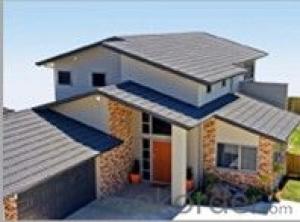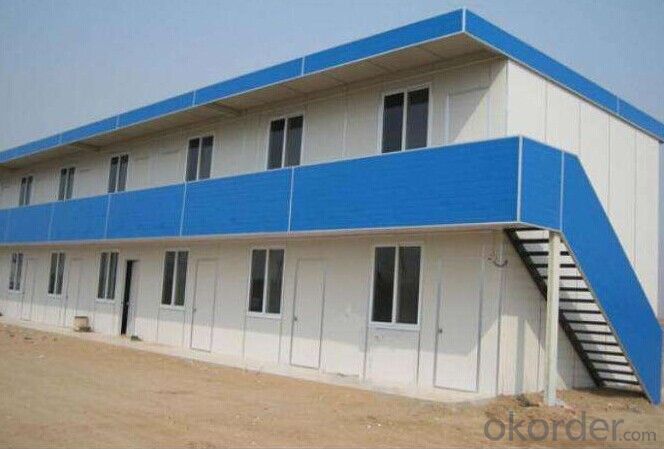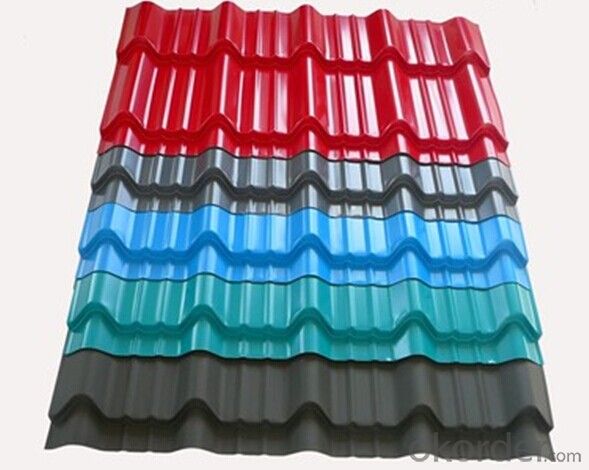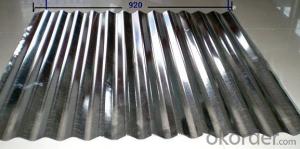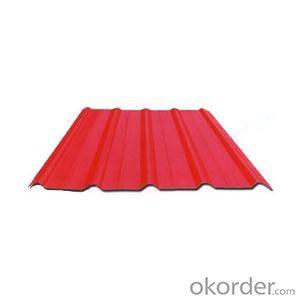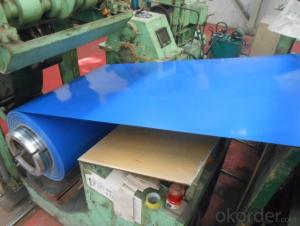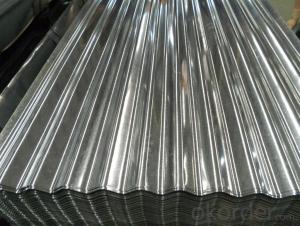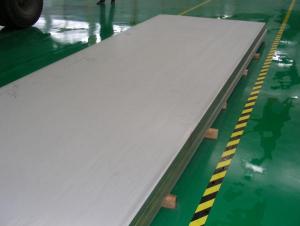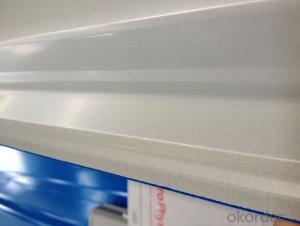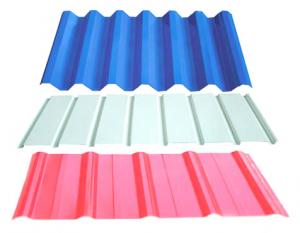Prepainted galvanized corrugated steel sheet
- Loading Port:
- China Main Port
- Payment Terms:
- TT OR LC
- Min Order Qty:
- -
- Supply Capability:
- -
OKorder Service Pledge
OKorder Financial Service
You Might Also Like
Specifications
Product name | Prepainted galvanized corrugated steel sheet |
Length | As your requirement |
Width Length | 600mm-1250mm or as your requirement as your requirement |
Thickness | 0.2mm-2mm |
Color | Ral NO. |
Bundle weight | As client's requirement |
Zinc coating | 40-275g/m2 |
Quality standard | JIS G3002 , JIS G3312 |
Lacquer | According to your needs |
Term | FOB,CFR,CIF |
Coil ID | 508mm,610mm |
Top coating | 15-25microns |
Back coating | 5-10microns |
MOQ | 50 tons |
Base material | Hot dipped galvanized steel coil |
Packaging Detail | 1.Coil then to be properly wrapped with water proof /resistant paper, it then to be properly and completely metal wrapped. 2.Wooden and iron pallet can be used or as your requirements. 3.And each packed coil to be properly wrapped with band, three-six such band through the eye of coil at about equal distance, and two-four such bands securely tied around belly of coil at about equal distance |
Delivery Detail | 40 days |
advantages
1.We had already passed the authentification by the ISO9001 and established a completed set of quality assurace system.
2.Under such a complete set of quality assurance systems,there is a complete set of regulations for ordering,order handing,quality design,purchasing raw materials,working ot production plan,prodction,test and inspection,packaging,storage,delivering,etc.
3.The PC-based production and marketing system not only improves the working efficiency but also ensres the quality of product.
4.Our PPGI lines are equipped with a large amount of online test instruments so that they can ensure and improve the quality of product.
- Q: What is the process of applying anti-slip coatings to steel sheets?
- The process of applying anti-slip coatings to steel sheets typically involves three main steps: surface preparation, application of the coating, and curing. First, the steel sheets are thoroughly cleaned and degreased to ensure proper adhesion of the coating. Then, a primer may be applied to further enhance adhesion. Next, the anti-slip coating is typically sprayed or rolled onto the steel sheets in multiple thin layers, ensuring even coverage. Finally, the coated sheets are left to cure, allowing the coating to fully bond and harden.
- Q: How are steel sheets protected from rust and corrosion?
- Steel sheets are protected from rust and corrosion through various methods and coatings. One common method is the application of a protective layer called galvanized coating. This involves immersing the steel sheets in a bath of molten zinc, which creates a barrier between the steel and the surrounding environment. The zinc coating acts as a sacrificial anode, meaning that it corrodes first before the steel does. This sacrificial protection prevents rust and corrosion from reaching the steel surface. Another method of protection is through the application of organic coatings such as paint. These coatings provide a physical barrier between the steel and the external environment, preventing moisture and other corrosive elements from coming into contact with the metal. The paint can be applied using various techniques, including spray, roll, or electrostatic deposition. In addition to galvanized coatings and paint, steel sheets can also be protected through the use of other coatings such as epoxy or polyurethane. These coatings provide enhanced protection against corrosion, especially in harsh environments or when the steel sheets are exposed to chemicals or abrasive materials. Regular maintenance and inspections are also crucial in preventing rust and corrosion on steel sheets. This includes cleaning the surface, removing any debris or contaminants, and repairing any damaged or worn-out coatings. By following these preventive measures, steel sheets can remain protected and maintain their structural integrity for a longer lifespan.
- Q: Are steel sheets suitable for exterior cladding?
- Yes, steel sheets are suitable for exterior cladding. Steel is a durable and strong material that can withstand various weather conditions, including harsh sunlight, heavy rain, and extreme temperatures. It is resistant to corrosion and does not warp or rot like some other materials. Steel sheets are also available in a variety of colors and finishes, allowing for a wide range of design options. Additionally, steel cladding is easy to install and maintain, making it a popular choice for exterior applications. Overall, steel sheets provide a reliable and aesthetically pleasing option for exterior cladding.
- Q: What is the typical impact strength of a steel sheet?
- The typical impact strength of a steel sheet can vary depending on the specific grade and thickness of the steel. However, steel sheets generally possess high impact strength due to their toughness and durability.
- Q: Can steel sheets be used for making furniture?
- Yes, steel sheets can be used for making furniture. Steel is a durable and sturdy material that can be shaped and formed into various furniture designs. It is often used for making chairs, tables, shelves, and other industrial or modern furniture pieces.
- Q: How do steel sheets compare to other sheet materials like aluminum or stainless steel?
- Steel sheets have several advantages over other sheet materials like aluminum or stainless steel. Firstly, steel sheets are known for their exceptional strength and durability. They can withstand heavy loads and are resistant to impact, making them ideal for applications that require high strength and stability. Aluminum sheets, on the other hand, are relatively softer and less resistant to impacts, making them more suitable for lightweight applications. Secondly, steel sheets offer excellent corrosion resistance. While stainless steel sheets also possess this characteristic, steel sheets can be coated with protective layers or galvanized to enhance their corrosion resistance even further. This makes steel sheets more suitable for outdoor applications or environments with high humidity or exposure to harsh chemicals. Aluminum sheets, on the contrary, are prone to corrosion and typically require additional coating or treatment for protection. Moreover, steel sheets are more cost-effective compared to aluminum or stainless steel sheets. Steel is widely available and has a lower production cost, making steel sheets a more affordable option for many industries. Aluminum sheets, on the other hand, tend to be more expensive due to the higher cost of the raw material and the manufacturing process involved. Stainless steel sheets are also relatively expensive due to the additional alloying elements present in their composition. Lastly, steel sheets offer excellent fire resistance. They have a high melting point and do not easily catch fire or contribute to the spread of flames. This makes steel sheets the preferred choice for applications that require fire safety, such as construction or transportation. In summary, steel sheets stand out due to their exceptional strength, durability, corrosion resistance, cost-effectiveness, and fire resistance. While aluminum and stainless steel sheets have their own unique properties and applications, steel sheets are often favored for their superior overall performance in various industries.
- Q: What are the weight considerations for steel sheets?
- Weight considerations for steel sheets vary depending on the specific application and desired outcomes. Here are a few key points to consider: 1. Thickness: The thickness of a steel sheet greatly affects its weight. Thicker sheets generally weigh more, while thinner sheets weigh less. It is important to choose a thickness that meets the structural requirements of the project while considering weight limitations. 2. Strength requirements: Different applications require steel sheets of varying strength levels. High-strength steel sheets are often thicker and heavier, while lower strength sheets can be thinner and lighter. Understanding the strength requirements of the project is crucial in determining the appropriate weight of the steel sheets. 3. Transportation and handling: The weight of steel sheets impacts their ease of transportation and handling. Heavier sheets require more labor and equipment for lifting, loading, and unloading. Moreover, transport vehicles have weight limits that need to be considered when selecting steel sheet sizes. 4. Structural limitations: The weight of steel sheets can affect the overall structural design. In some cases, lighter sheets may be preferred to reduce the load on supporting structures. However, in other scenarios, heavier sheets may be necessary to provide the required strength and stability. 5. Cost considerations: The weight of steel sheets can also impact the overall cost of a project. Heavier sheets typically cost more due to the increased material required and the additional handling expenses. Therefore, it is essential to strike a balance between weight, cost, and performance to optimize the project's budget. Overall, weight considerations for steel sheets are crucial in determining the appropriate thickness, strength, transportation requirements, structural design, and cost-effectiveness of a project. By carefully evaluating these factors, one can select steel sheets that meet the specific needs while ensuring the optimal weight for the desired outcome.
- Q: Are steel sheets suitable for outdoor sculptures or artwork?
- Yes, steel sheets are suitable for outdoor sculptures or artwork. Steel is a durable and weather-resistant material that can withstand various outdoor elements such as rain, wind, and sunlight. It allows artists to create intricate and large-scale structures that can be placed outdoors without the risk of damage or deterioration. Additionally, steel sheets can be easily manipulated and welded, providing artists with the freedom to shape and form their artistic vision.
- Q: What is the difference between galvanized and non-galvanized steel sheets?
- The main difference between galvanized and non-galvanized steel sheets is the presence of a protective zinc coating on the galvanized sheets. This coating helps to prevent corrosion and rusting, making galvanized steel sheets more durable and long-lasting compared to non-galvanized ones.
- Q: What are the common thicknesses for roofing steel sheets?
- The common thicknesses for roofing steel sheets range from 22 gauge (0.0299 inches) to 29 gauge (0.0149 inches), with 26 gauge (0.0187 inches) being the most commonly used thickness in the industry.
Send your message to us
Prepainted galvanized corrugated steel sheet
- Loading Port:
- China Main Port
- Payment Terms:
- TT OR LC
- Min Order Qty:
- -
- Supply Capability:
- -
OKorder Service Pledge
OKorder Financial Service
Similar products
Hot products
Hot Searches
Related keywords
